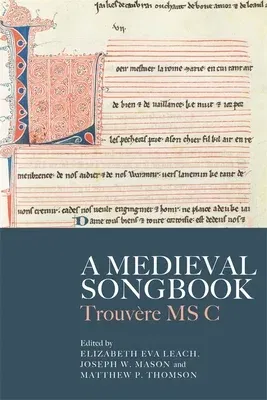The medieval songbook known variously as trouvère manuscript C or
the "Bern Chansonnier" (Bern, Burgerbibliothek, Cod. 389) is one of the
most important witnesses to musical life in thirteenth-century France.
Almost certainly copied in Metz, it provides the texts to over five
hundred Old French songs, and is a unique insight into cultures of
song-making and copying on the linguistic and political borders between
French and German-speaking lands in the Middle Ages. Notably, the names
of trouvères, including several female poet-musicians, are found in its
margins, names which would be unknown today without this evidence.
However, the manuscript has received relatively little scholarly
attention, partly because the songs' musical staves remained empty for
reasons now unknown, and partly because of where it was copied.
This collection of essays is the first to consider C on its own
terms and from a range of disciplinary perspectives, including
philology, art history, literary studies, and musicology. The
contributors explore the process of creating the complex object that is
a music manuscript, examining the work of scribes and artists who worked
on C, and questioning how scribes acquired and organised exemplars
for copying. The peculiarly Messine flavour of the repertoire and
authors is also discussed, with contributors showing that C frames
the tradition of Old French song from a unique perspective. As a whole,
the volume demonstrates how in this eastern hub of music and poetry,
poet-composers, readers, and scribes interacted with the courtly song
tradition in fascinating and unusual ways.

